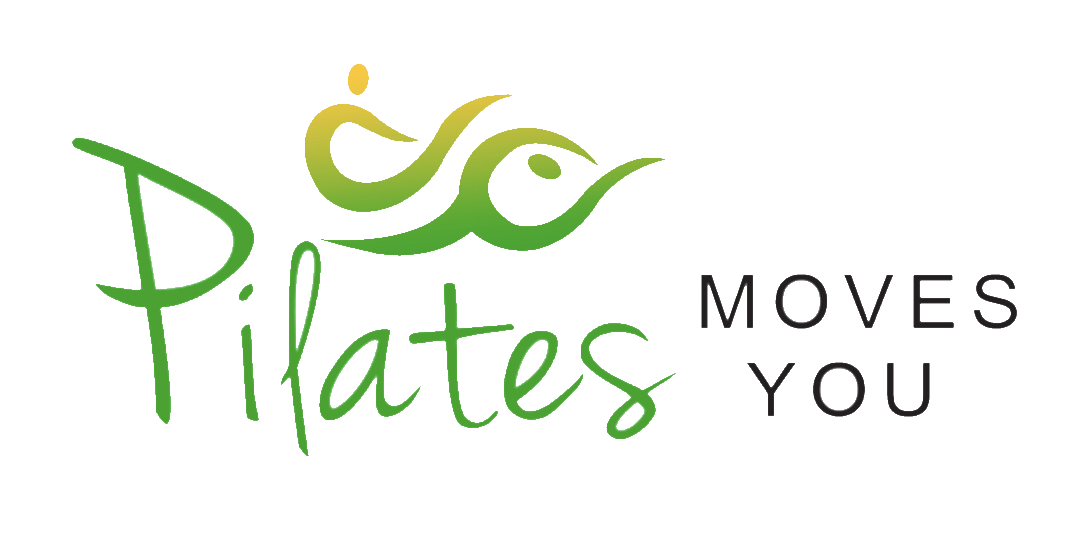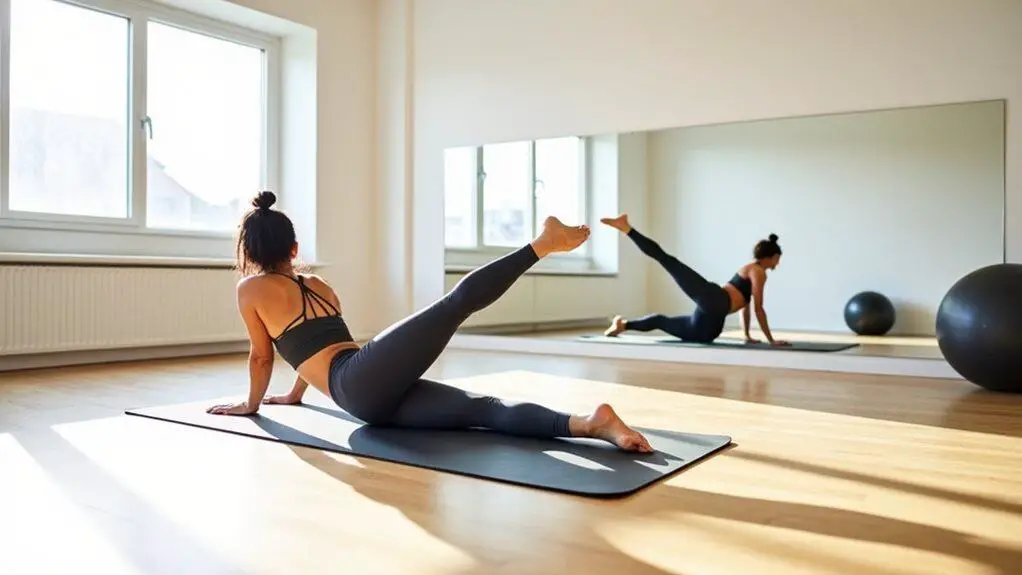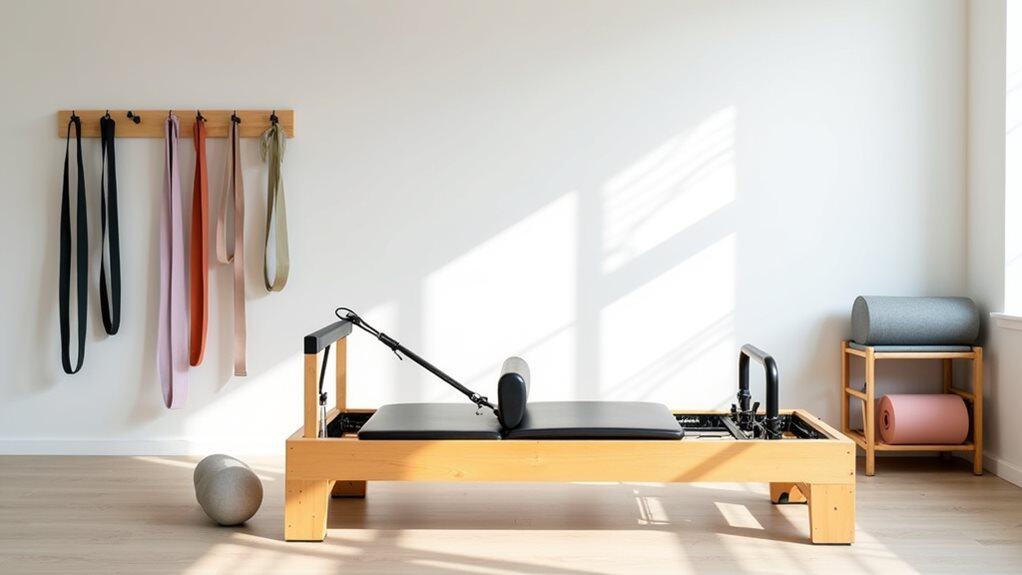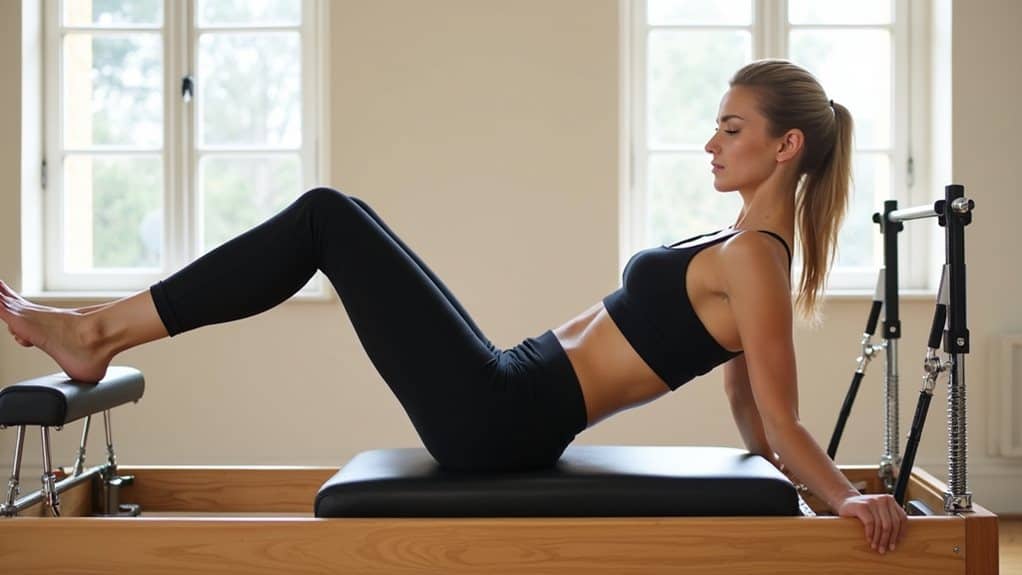Amid the hustle and bustle of contemporary life, neck pain has emerged as an all-too-familiar discomfort for many. With long hours hunched over screens or buried in paperwork, our cervical spine often bears the brunt of our modern habits. For those seeking relief, an ancient form of movement might just offer a beacon of hope.
Pilates can effectively soothe neck pain by strengthening and lengthening the muscles around the cervical spine. Through focused exercises, Pilates promotes better posture, flexibility, and balance, alleviating tension and preventing future discomfort in the neck region. Regular practice can yield noticeable relief.
But rather than delving into the specifics here, let’s embark on a journey to discover how this practice might pave the way for a pain-free neck.
Understanding the Anatomy of the Neck
The neck, or the cervical spine, is a marvel of engineering that supports the head’s weight and grants it a wide range of motion. Here’s a deeper look into its intricate structure:
- Vertebrae and Discs: The cervical spine consists of seven vertebrae, from the skull’s base to the upper torso. Between these vertebrae are intervertebral discs that act as cushions, preventing bone-on-bone friction and allowing flexibility.
- Muscles and Ligaments: Surrounding the cervical spine are various muscles and ligaments. The muscles enable movement, while the ligaments provide stability. Strains or injuries to these muscles often result in neck pain.
- Nerves: The spinal cord runs through a central canal in the vertebrae. Nerves branch out from the spinal cord, passing between the vertebrae. These nerves relay messages between the brain and the rest of the body. Any compression or irritation can cause neck or radiating pain to other body parts.
- Blood Vessels: The neck also houses critical blood vessels, including the carotid and vertebral arteries, which supply blood to the brain.
- Other Structures: The neck contains other essential structures like the trachea, esophagus, and glands like the thyroid and parathyroid.
Understanding the anatomy of the neck is pivotal for two main reasons:
- Targeted Treatment: Knowing which part of the neck is affected allows for more specific and effective Pilates exercises. For instance, strengthening exercises may focus on weakened muscles, while stretching routines might target areas of tension.
- Prevention: A clear understanding of how the neck is constructed can guide individuals in daily practices that protect and preserve the integrity of this crucial region, preventing injuries and strains.
In the context of Pilates, appreciating this anatomy is the first step. With this foundational knowledge, one can more effectively harness the benefits of Pilates exercises to address, alleviate, and even prevent neck pain.
Pilates Principles: A Foundation for Relief
Pilates is not just a set of exercises; it’s a holistic approach to body movement and health rooted in core principles. When addressing neck pain, understanding these principles can pave the way for genuine relief and sustainable well-being.
- Centering: At the heart of every Pilates exercise is the concept of ‘centering,’ which refers to the core or the “powerhouse” of the body. By activating and engaging the core during exercises, one can achieve better posture and alignment, often alleviating undue stress on the neck.
- Concentration: Pilates demands a mindful engagement with each movement. This heightened awareness ensures that exercises are performed correctly, maximizing their benefits and minimizing the risk of injury.
- Control: Every Pilates movement requires control. This precision helps strengthen the right muscles without overexertion, leading to balanced muscle development around the cervical spine and reducing neck strain.
- Breath: Proper breathing is foundational in Pilates. Deep and coordinated breathing not only fuels the muscles but also aids in releasing tension, especially in the upper body and neck region.
- Flow: Pilates emphasizes the grace and fluidity of movement. This ensures that muscles work harmoniously, distributing workload evenly, which can prevent overburdening the neck muscles.
- Precision: A hallmark of Pilates is the precision of each exercise. This attention to detail ensures that movements are biomechanically sound, offering therapeutic benefits while avoiding unnecessary strain.
By embracing these principles, one isn’t just performing exercises; they’re adopting a holistic approach to movement. For those with neck pain, this means seeking temporary relief and building a foundation for a more aligned, balanced, and pain-free existence. With Pilates, the journey towards a comfortable neck is deeply intertwined with these guiding principles, making every stretch, lift, and breath a step towards lasting relief.
Targeted Pilates Exercises for Neck Pain
The strength of Pilates lies in its ability to target specific muscle groups, promoting healing and strengthening where it’s most needed. For those experiencing neck discomfort, a few specialized exercises can make a world of difference:
- Neck Roll:
- How to: Sit or stand tall with your spine aligned. Slowly drop your head forward and gently roll it to one side, then to the back, to the other, and finally forward again.
- Benefits: This simple exercise helps release tension in the neck, improving flexibility and promoting blood circulation.
- The Swan:
- How to: Begin by lying face down with your hands by your shoulders. Engaging your back muscles, slowly lift your upper body, extending your neck and looking upward.
- Benefits: This strengthens the back muscles, promotes good posture, and alleviates pressure on the neck.
- Scapula Isolations:
- How to: Sit or stand with a straight spine. Without lifting your arms, move your shoulder blades together and then apart. Keep the movement smooth.
- Benefits: This exercise strengthens the muscles between the shoulder blades, supporting a better posture and reducing neck tension.
- Head Float:
- How to: Lie on your back with knees bent and feet flat on the floor. Imagine a string attached to the top of your head, gently pulling it upwards. Let your head float up slightly and then release.
- Benefits: This engages the deep neck flexors, providing stability to the cervical spine.
- Book Openings:
- How to: Lie on your side with your arms extended and legs bent at a 90-degree angle. Keeping your hips stable, open your top arm to the opposite side, rotating your upper spine and head. Return to the starting position and repeat.
- Benefits: This exercise encourages thoracic mobility, ensuring the upper back shares the workload, thus relieving the neck.
While these exercises offer targeted relief for neck pain, it’s crucial to approach them with the foundational Pilates principles in mind. Ensure smooth, controlled motions, with a focus on precision and breath. As always, if you’re new to Pilates or have chronic neck issues, it’s a good idea to consult with a certified Pilates instructor or a healthcare professional before embarking on these exercises.
The Role of Posture and Alignment in Neck Health
The importance of posture and alignment cannot be overstated in spinal health. These two elements play a pivotal role in determining the well-being of our neck or cervical spine, and greatly influence our day-to-day comfort and long-term health.
- The Domino Effect of Poor Posture:
- Mechanics: Slouching or hunching, often exacerbated by hours spent at desks or on devices, can shift the head forward, creating an anterior weight load. This “forward head posture” exerts additional pressure on the cervical vertebrae and discs.
- Implications: Over time, this strain can lead to disc degeneration, muscle imbalances, and even nerve impingements. In their struggle to support this unnatural position, the neck muscles often end up in chronic tension, resulting in persistent pain.
- Alignment Matters:
- Natural Curve: The cervical spine has a natural lordotic curve, which needs to be maintained for optimal spinal health. Any deviation from this natural alignment, from poor habits, injuries, or structural anomalies, can be a precursor to pain and discomfort.
- Balanced Load: Proper alignment ensures that the head’s weight is evenly distributed across the spine, preventing undue pressure on any single point.
- The Ripple Effect:
- Beyond the Neck: Poor neck posture doesn’t just affect the cervical spine. It can impact the entire spinal column, leading to issues in the thoracic and lumbar regions. A misaligned neck can alter shoulder mechanics, disrupt balance, and influence lower back health.
- Holistic Health: Proper neck alignment contributes to overall wellness, influencing everything from respiratory efficiency to nervous system function.
- Pilates to the Rescue:
- Restorative Movements: Pilates exercises prioritize spinal alignment. Targeted movements and stretches help realign the cervical spine and rectify postural imbalances.
- Awareness Building: Beyond physical corrections, Pilates fosters a heightened body awareness, making individuals more aware of their posture throughout the day.
In summary, while the neck might be a small portion of our anatomy, its health has profound implications for our overall well-being. Proper posture and alignment are not just about aesthetics or preventing discomfort; they’re fundamental to our holistic health. Through practices like Pilates, we can reclaim our natural posture and pave the way for a life free from cervical discomfort.
Sources:
https://complete-pilates.co.uk/pilates-for-neck-pain/
https://elevatephysio.com.sg/can-pilates-help-my-neck-pain/–https://www.verywellfit.com/neck-pain-in-pilates-ways-to-overcome-2704397




